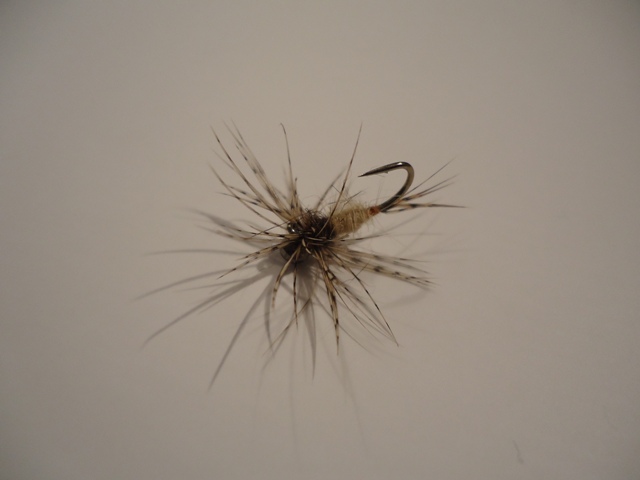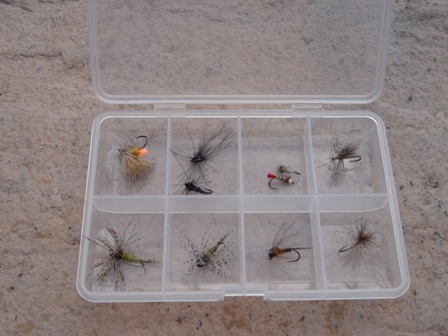Tenkara
Tenkara is a Japanese form of fly fishing that literally translates as “from the skies”.
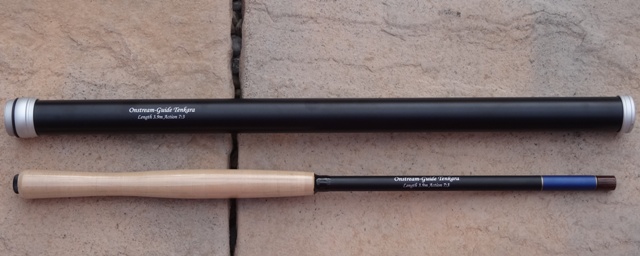 A Tenkara 12 foot rod. The ultimate in streamlined light fly fishing on the river. A Tenkara 12 foot rod. The ultimate in streamlined light fly fishing on the river. |
It is a minimalist technique with no reel and a telescopic rod which collapses into a very small size of around 20 inches. |
|
Extended for fly fishing a Tenkara rod is typically somewhat longer than a western fly rod usually between 11 and 13 feet. The rod is rated for action by the ratio of stiff to flexible sections. For example a 6:4 rod has 6 stiff sections and 4 flexible sections and would be considered to have a soft/moderate action. |
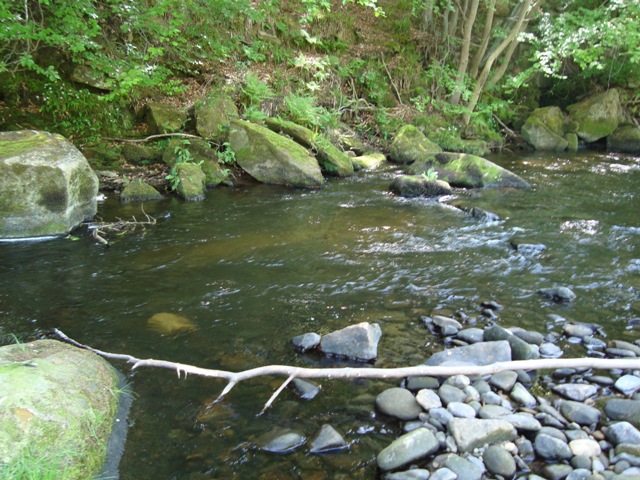 A small stream with small wild fish.... an ideal spot for Tenkara Fly Fishing. A small stream with small wild fish.... an ideal spot for Tenkara Fly Fishing. |
It has both advantages and disadvantages compared with traditional forms of Western fly fishing with a fly line and reel.
|
Advantages of Tenkara. Light tackle fishing fanatics rave about the fact that a Tenkara outfit weighs practically nothing and easily fits into a small day pack. For opportunist fly fishers that just might get an hour on the stream here and there it is therefore ideal. Leave it in the back of the car/rucksack and grab it when needed. It only takes a minute to set up and you can fish the stream. However serious fly fishers are less concerned with convenience and are more interested in any fishing advantages that Tenkara might offer. Well there is good news. On the right stream and in the right conditions Tenkara can give excellent and even improved presentation compared with traditional fly fishing; although obviously the range will be limited and the fly fisher by necessity will be fishing short.This is because drag can effectively be eliminated and all line held above the river. This for example can be a boon to dry fly fishing in complex current lines where traditional fly fishing would require special casts such as pile casts to compensate and try to prevent drag. It’s also a very fast form of fly fishing and the fly spends a great deal of time where it is effective i.e. either on the surface of or in the river. In the following clip I use Tenkara to catch winter grayling on weighted nymphs fished at depth. |
l l l l l l I I I I I l l l l l l |
Disadvantages of Tenkara. If Tenkara is so great why don’t we use it all the time? Well the big caveats in the description above are on the right stream and in the right conditions. To qualify that remark it means ideally on small/medium sized streams, with cover and on near windless days. Tenkara is not going to be useful on large crystal clear streams where you can’t wade within 30 feet of a trout without it spooking. Nor is it going to be great if every trout is a specimen 20 inch fish. If fish regularly strip fly line where you fish traditional methods then stick with those traditional methods. For this reason manufacturers of Tenkara rods recommend limiting tippet breaking strain to below 6lb. Tenkara is more suited to small streams and smaller fish. The big advantage of Tenkara in terms of improved presentation relies on a large assumption of low wind speeds. In windy conditions the Tenkara fisher will have to lay more line on the surface and any advantage over Western style fishing would be effectively lost. In short Tenkara can be a very useful addition to the keen river fly fishers armoury but personally I would not consider it as an outright replacement for my traditional river outfits. My vintage Sage 8 foot 9 inch 3 weight outfits still occupy pole position. That said variety is the spice of life and Tenkara offers an engaging alternative at certain times. |
Onstream-guide Tenkara outfit
At first glance the disadvantages of Tenkara may be too big a hurdle for
seasoned river fly fishers. However at Onstream-guide we have been
actively developing a Tenkara system for medium/large sized rivers and the
larger fish often encountered there, although still perfect for smaller
streams.
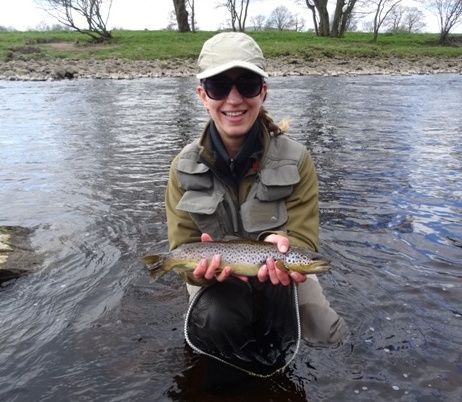 |
We are also using a unique two stage furled leader system to maximise control and adapt to the conditions on the stream. The result of research and development is a 7:3 action 13 foot Tenkara rod with the strength in depth to easily handle wild trout to over 2lb’s in weight. This is balanced by a furled leader system that provides the delicate control required in calm perfect (but often absent!) conditions, but with enough beef to cut the mustard when conditions are more typically breezy. The leader will still help you turn that fly over into that current crease, previously unreachable with a western style outfit because of ripping drag that causes a dry fly to zip downstream subsurface spooking everything in the process.
|
Versatility is inbuilt because of the two lengths of tapered end section which attach to the butt section by a seamless loop to loop connection. The shorter 5 and a half foot section is ideal for Czech or Polish nymphing when fishing “short” is a fundamental requirement. It is also more forgiving to newcomers to fly fishing and when conditions are less than favourable in terms of the hated wind. It is also great for smaller streams.
|
The longer 7 foot section is suited to longer delicate dry fly presentations or for use on larger rivers with the duo enabling long drag free drifts in complex flows resulting in more fish. It is loved by more experienced fly fishers and is superb all round in calm conditions. Effectively this is two furled leader systems in one enabling rapid changes between the two as required. Japanese Raji Leica spools and foam rig holders are provided with the Onstream-guide Tenkara outfit for storage of set up rigs. The tapered furled leader end sections are fitted with tippet rings for simple and easy attachment of tippet. We use the improved davy knot illustrated here for this purpose. |
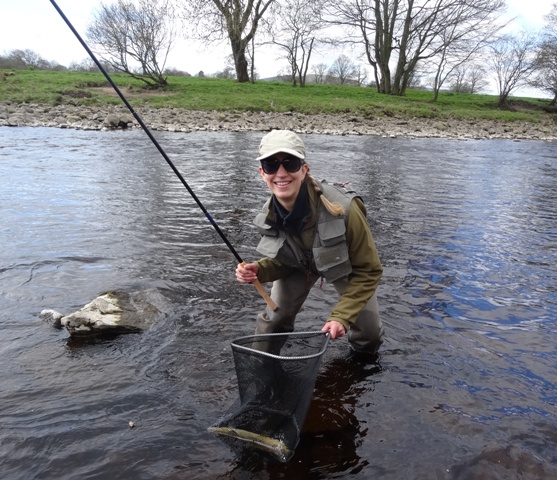 |
Presentation
is a cornerstone of river fly fishing and the Onstream-guide Tenkara outfit
allows fly fishers of all ability to achieve good presentation with minimal
practice. The outfit also includes free of charge a small selection of
tested and proven Onstream-guide flies to get any newcomer on the stream and
catching fish (remember your rod licence and permit!). For experienced
fly fishers the outfit is a great additional tool to your Western style outfit.
Get longer drifts when Czech nymphing or get drag free presentations in
those complex pockets that never even see an artificial fly.
Setting up the Tenkara outfit
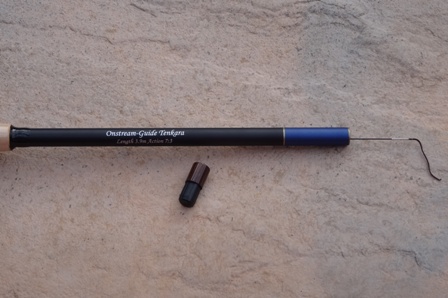 |
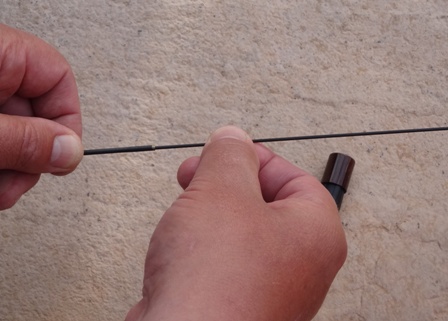 |
Setting up the Tenkara outfit is simplicity itself. Remove the end cap and keep it somewhere safe. Extend the rod as shown starting with the tip section. Ensure each section is firmly but not too tightly extended.
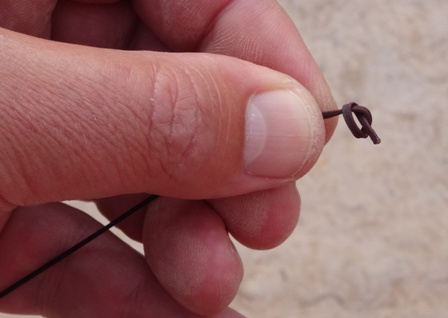 |
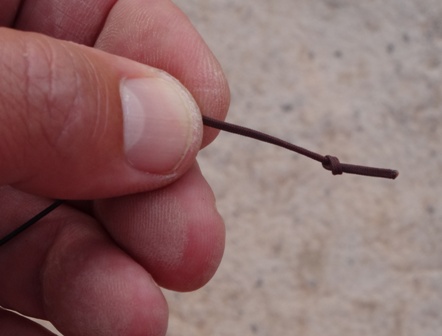 |
Tie a single overhand knot in the lillian (the material attached to the end section).
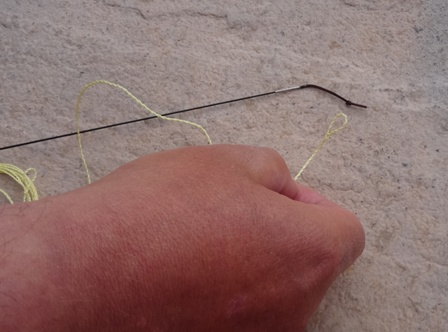 |
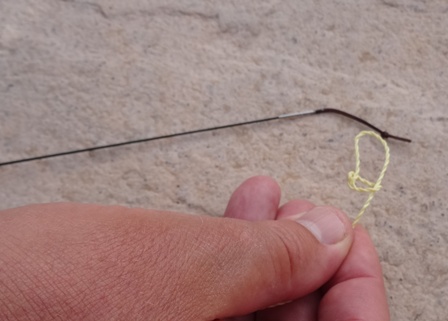 |
Take the thick end of the tapered butt section (loop at both ends) and thread the leader through the loop as shown.
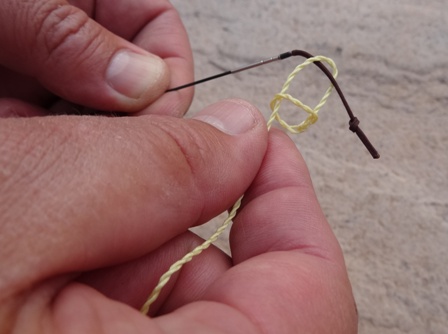 |
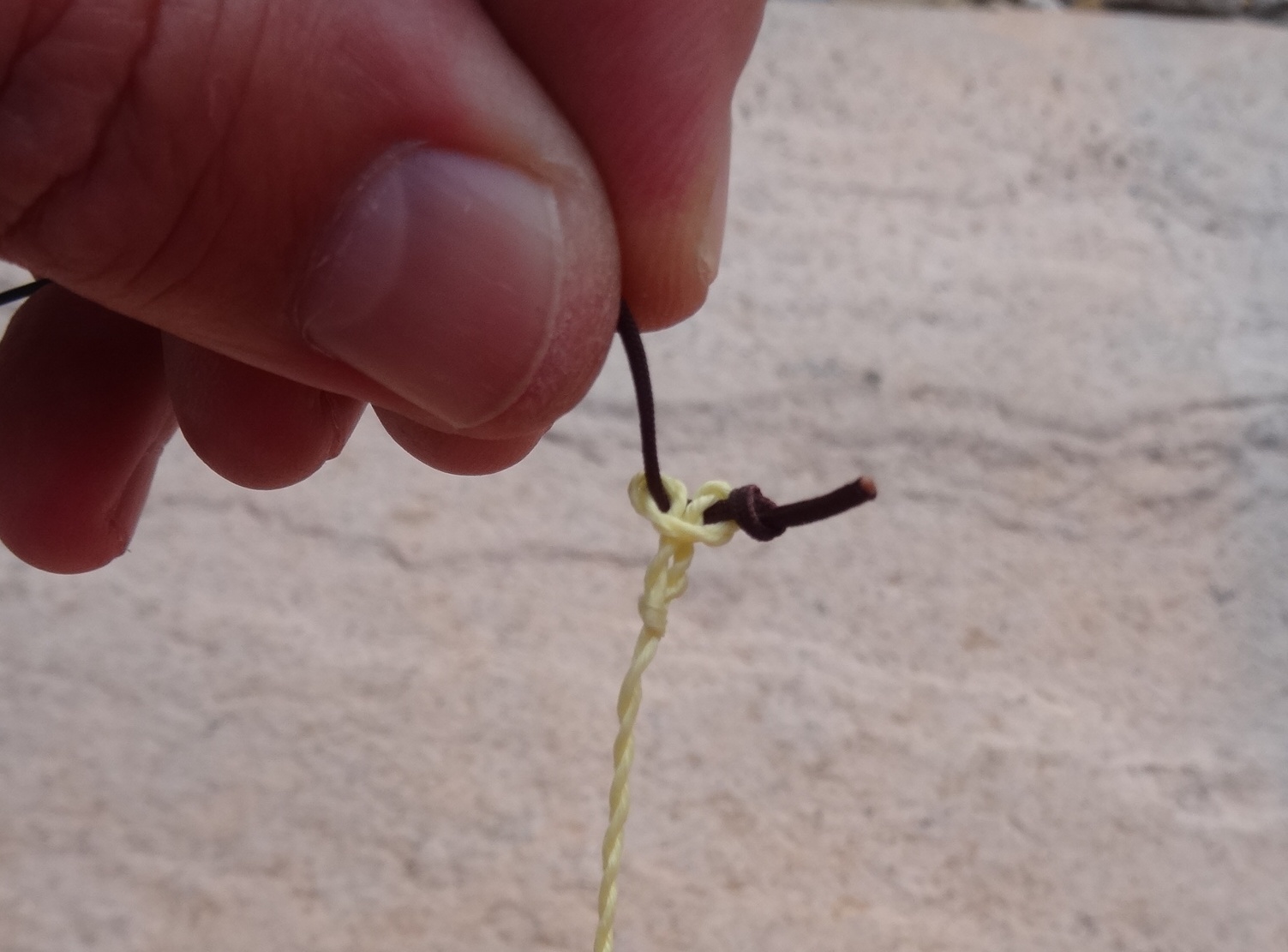 |
Put the Lillian through this loop and tighten behind the overhand knot as shown using the sheepshank knot.
|
Pull the knot tight behind the overhand knot as shown to form a secure but easily reversed knot. Add a furled leader end section either 5 and a half or 7 feet. Tie your tippet material and add a fly or flies and fish. The outfit is available here. |
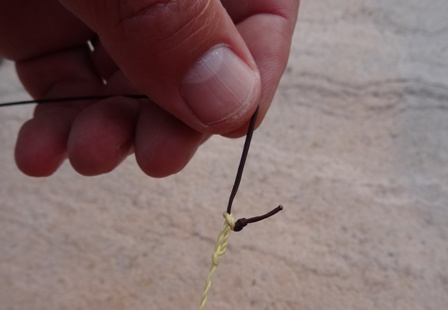 |
Tenkara Flies
Flies associated with Tenkara are not dissimilar to traditional North Country spiders or soft hackles to our visitors from over the pond. They are often tied funnel style which aids presentation from a dapped fly. The body of the fly hangs enticingly in the current and the soft hackles support the fly and add movement and give the impression of life. If you have visited other pages on this site you will know I am a big fan of adding soft hackles to flies. The soft hackle dry featured here works superbly with Tenkara.
|
The polyphaetis nymph shown is also a superb fly used in conjunction with Tenkara. Click on the image to find out more. |
Onstream-guide Tenkara fly box. For more information about its content please click on the picture. |
